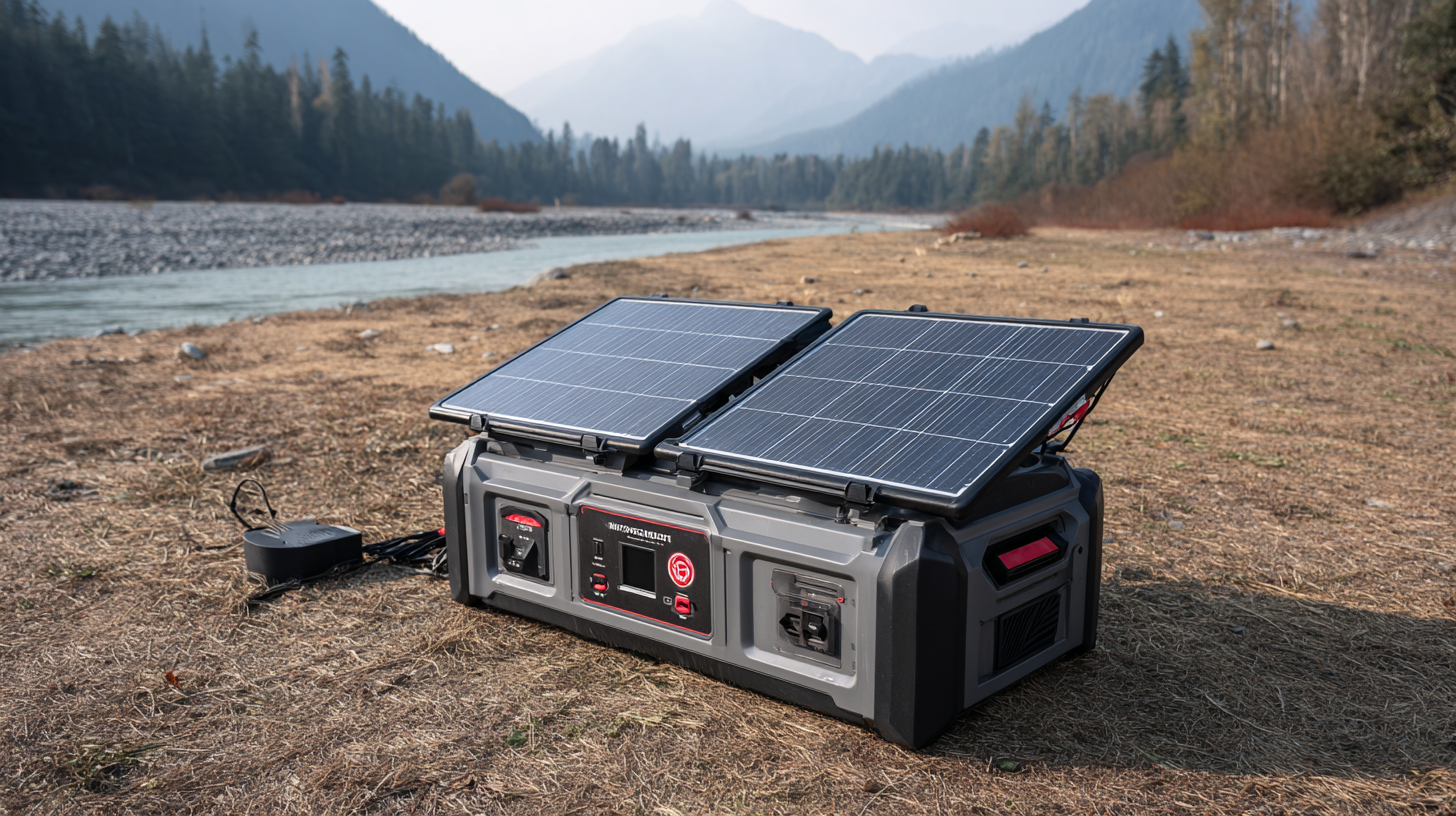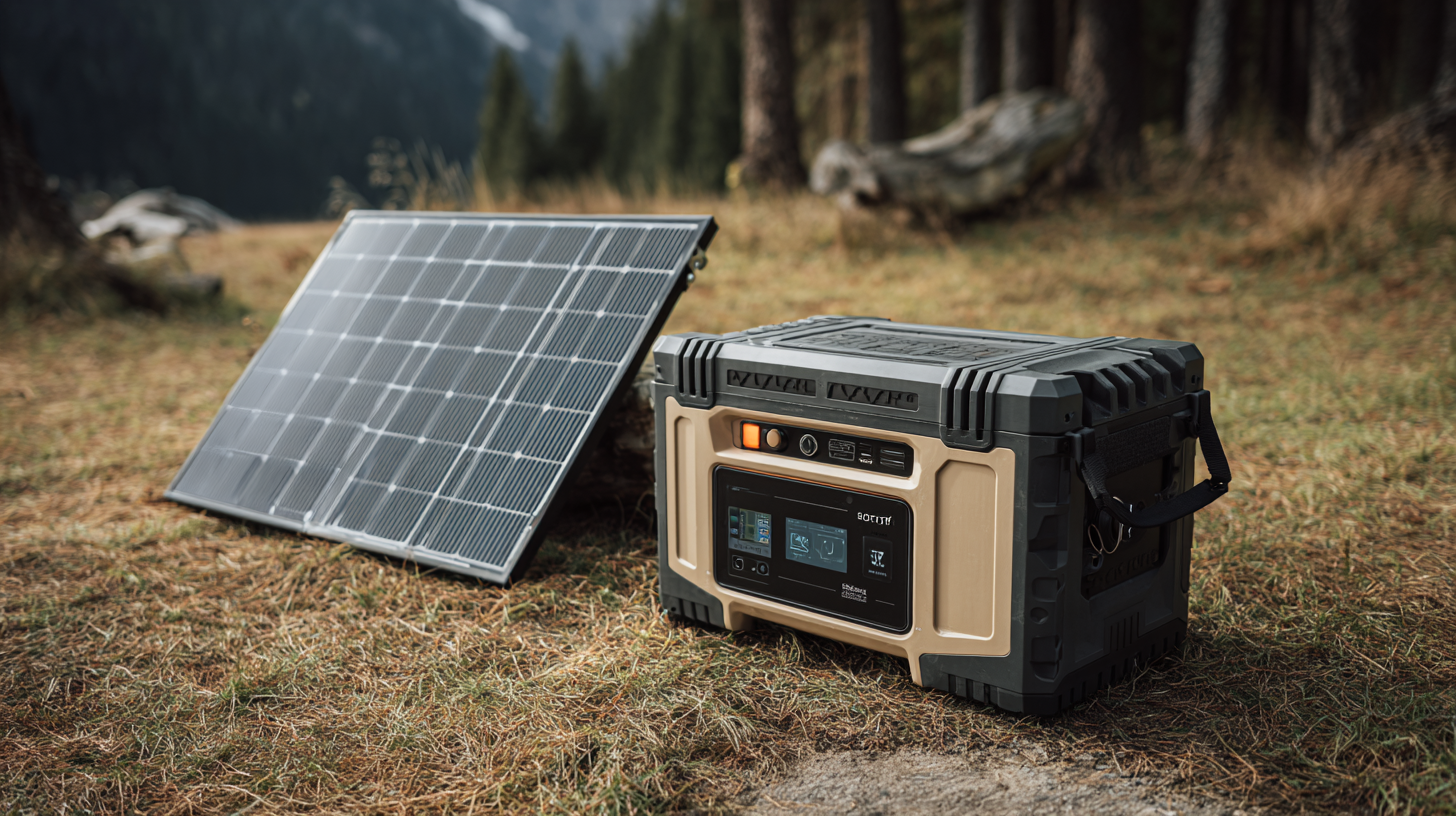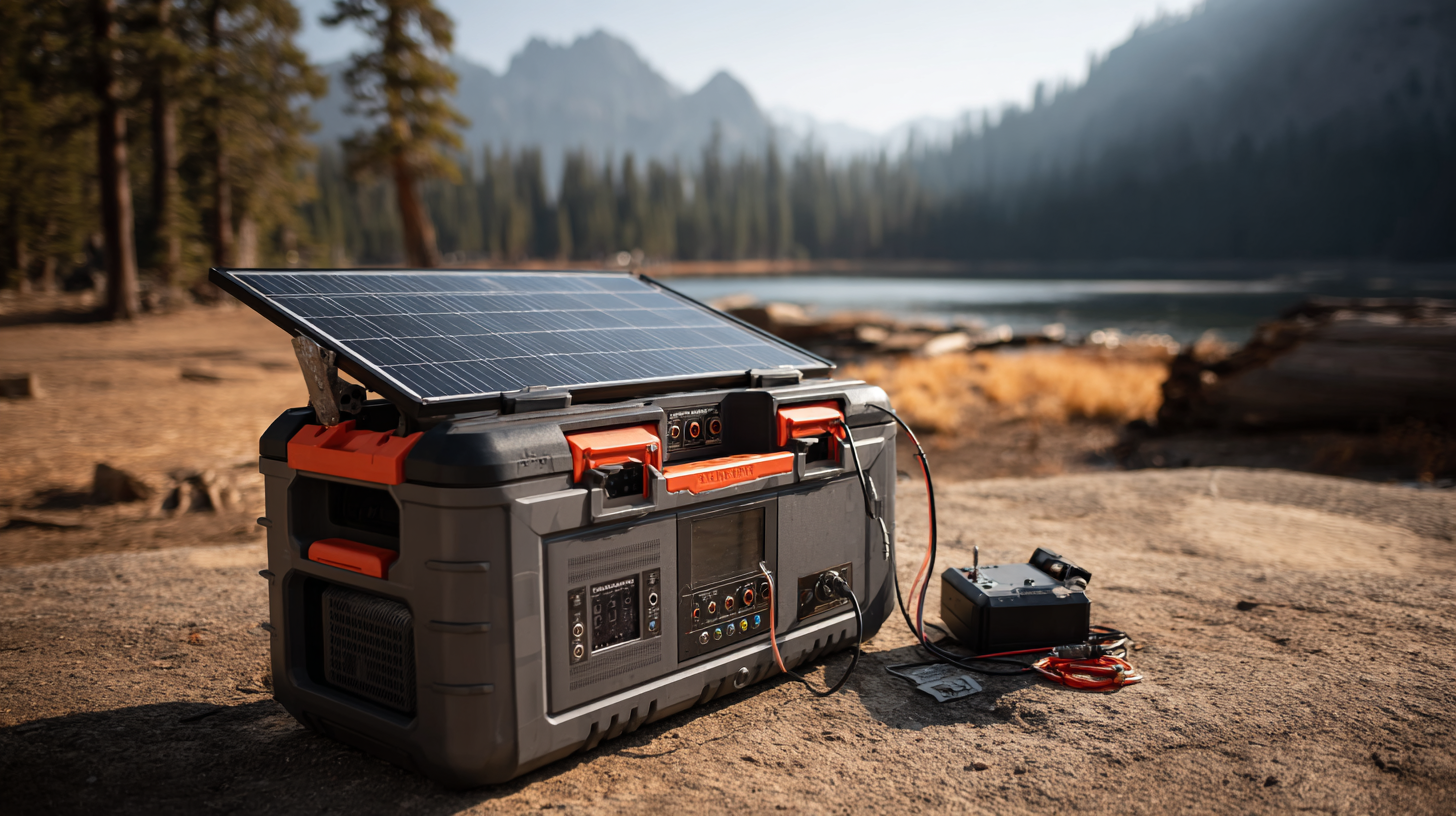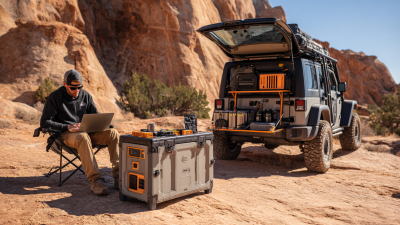5 Essential Tips for Choosing a Portable Power Station With Solar Panel
Table of Contents
- Understanding Your Power Needs: Calculate Wattage Requirements for Devices
- Evaluating Battery Capacity: Why Amperage and Voltage Matter for Solar Stations
- Portability and Weight Considerations: Choosing the Right Size for Travel
- Solar Panel Compatibility: Ensuring Efficient Charging and Performance
- Durability and Weather Resistance: How to Choose a Reliable Outdoor Power Station
- Budget vs. Quality: Finding the Right Balance When Selecting a Power Station
- FAQS
- Conclusion
- Related Posts
In today's super hectic world, staying connected and having a reliable power source is more important than ever—especially if you're into outdoor adventures, camping trips, or just being prepared for emergencies. A portable power station with a solar panel? It’s honestly such a game-changer for keeping your gear charged up while you're on the go. At Zhejiang Cejia Electric Co., Ltd., we totally get how crucial dependable energy storage is—that’s why, with over 20 years of experience in the electric market, we've developed some pretty solid, professional energy solutions. We really focus on quality and keep our prices competitive because we want our customers to get the best bang for their buck. In this blog, I’ve put together 5 key tips to help you pick the right portable power station with a solar panel—so you can make smarter choices, meet your energy needs, and stay eco-friendly while you're at it.

Understanding Your Power Needs: Calculate Wattage Requirements for Devices
When you're looking to pick out a portable power station with a solar panel, it's super important to really understand what your power needs are. Honestly, start by figuring out the wattage of the devices you'll be using. Each gadget has its own wattage, which basically tells you how much energy it uses. For example, small stuff like phones and tablets usually don't need much power, but things like laptops or mini-fridges will drain more energy. Getting a good handle on what your devices need will help you choose a power station that can handle everything without overloading or leaving you short.
Also, don’t forget to think about capacity. You want a model that's not just enough for now but also has some extra room for any future gear. Going with a reliable brand, like Zhejiang Cejia Electric Co., Ltd., which is known for solid energy storage solutions, is a smart move. They’ve been around for over 20 years, so they know their stuff—and they offer quality products at competitive prices. All in all, taking the time to really evaluate your wattage needs and capacity will help you pick the perfect portable power source that won’t let you down.
Evaluating Battery Capacity: Why Amperage and Voltage Matter for Solar Stations
If you're thinking about grabbing a portable power station with a solar panel, one of the most important things to pay attention to is the battery capacity. It’s not just about the size — metrics like amperage and voltage really matter because they affect how well the thing works and whether it’s a good fit for what you need.
 For example, higher amperage means it can handle delivering bigger bursts of power quickly, which is great if you’re running high-drain devices like a mini fridge or power tools. On the other hand, voltage levels are all about compatibility — making sure the power station matches the systems you're hooking it up to, which makes everything run smoother and more reliably.
For example, higher amperage means it can handle delivering bigger bursts of power quickly, which is great if you’re running high-drain devices like a mini fridge or power tools. On the other hand, voltage levels are all about compatibility — making sure the power station matches the systems you're hooking it up to, which makes everything run smoother and more reliably.
Lately, with all the excitement around solar and battery tech, it’s more important than ever to really understand these specs in real-life situations. Projects that combine solar panels with battery storage have shown how crucial it is to size everything right and get the integration just right. Differences in voltage, even small ones, can make a big difference in how efficiently energy is used.
As everyone shifts more toward renewable energy, talking about these kinds of details for portable power stations just makes sense — especially if you’re looking for a sustainable option for camping trips, emergencies, or just cutting down your energy bills at home.
Portability and Weight Considerations: Choosing the Right Size for Travel
When you're on the hunt for a portable power station that comes with a solar panel, a couple of things really matter—mainly, how easy it is to carry around and how heavy it is. If you're into hiking, camping, or just road-tripping, a lighter model can make a huge difference in how mobile you feel. You wanna find that sweet spot between having enough juice to charge your gadgets and not dragging around some bulky thing that weighs you down. Most manufacturers list the weight and size, so it’s pretty straightforward to pick something that fits your needs without any surprises.
Oh, and don't forget about storage! A smaller, more compact power station is super handy if you’re sticking it in your backpack, your car trunk, or squeezing it into a tight camping spot. Just double-check that those smaller units can still handle your power needs, though. Some brands even offer foldable solar panels that take up hardly any space and can easily clip onto your pack—super convenient. If you take a little time to think about these things, you’ll find a power station that works perfectly for how you like to travel and keeps your devices charged. That way, you’ll never be left in the dark during your adventures—that’s the goal, right?
5 Essential Tips for Choosing a Portable Power Station With Solar Panel
| Tip | Description | Portability Factor | Weight Considerations (lbs) |
|---|---|---|---|
| 1. Consider Your Power Needs | Assess the wattage of devices you plan to use. | High | 15 |
| 2. Evaluate Battery Capacity | Choose a unit with sufficient capacity for your needs. | Medium | 20 |
| 3. Check Weight and Size | Lighter units are easier to transport. | High | 12 |
| 4. Assess Charging Options | Look for multiple charging options including solar. | Medium | 18 |
| 5. Read User Reviews | Learn about real user experiences and reliability. | Low | 10 |
Solar Panel Compatibility: Ensuring Efficient Charging and Performance
So, when you're picking out a portable power station that comes with a solar panel, one of the biggest things to think about is whether the solar panel actually matches up well with the station. Getting a solar panel that's a good fit can really boost how fast it charges, which is super helpful if you're out camping or in an emergency and need your device up and running quickly. Interestingly enough, according to the National Renewable Energy Laboratory, solar panels now have really improved — modern ones can be up to 23% efficient. That basically means they can soak up sunlight and turn it into usable energy a lot faster, so you're not waiting around forever to recharge.

Durability and Weather Resistance: How to Choose a Reliable Outdoor Power Station
When you're choosing a portable power station with a solar panel, especially for outdoor use, durability and weather resistance should be front and center. These devices are often slapped into rugged environments where they’re exposed to all sorts of stuff—rain, snow, dust, crazy temperature swings—and you really want something that can handle all that. So, look out for models with tough enclosures, waterproof ratings, and dust-proof builds. Trust me, those little details can make a big difference when it comes to lasting long and performing reliably.
And don’t forget about what's inside! The quality of the batteries matters a ton—high-quality lithium-ion ones tend to perform way better in tough weather than cheaper alternatives. Plus, it’s super helpful to check out customer reviews about how these power stations hold up in different conditions. Real-world experiences can give you a much clearer picture of what to expect. If you keep these things in mind, you’ll end up with a power station that not only keeps the lights on and gadgets charged but also stands up to whatever outdoor adventure throws at it, giving you some peace of mind when things get rough out there.
Budget vs. Quality: Finding the Right Balance When Selecting a Power Station
So, when you're picking out a portable power station, especially one with a solar panel, it's really about finding that sweet spot between what you wanna spend and getting good quality. Honestly, it’s tempting to just go for the cheapest option out there, but that can sometimes mean sacrificing performance or how long it’ll last. I’d say, if you can, look into a reputable brand like Zhejiang Cejia Electric Co., Ltd. — they’ve been around for over 20 years in the energy storage game. That kind of experience really shows in the quality of their stuff, and the best part? They keep their prices pretty reasonable too.
A solid power station isn’t just about having reliable energy when you need it. Good units come packed with clever features—things like multiple ways to charge, smooth solar panel integration, and smart management systems that help you get the most out of your energy. Picking a model that balances affordability with quality means you can confidently take it on outdoor adventures or rely on it during power outages without sweating over whether it’ll hold up. In the end, it’s definitely a worthwhile investment that pays off in the long run.
Comparison of Budget vs. Quality in Portable Power Stations
FAQS
: Calculating wattage requirements is crucial to ensure that the power station meets your devices' energy demands without overloading or underperforming.
Each device has a specific wattage that indicates its power consumption. Small gadgets like phones consume less power compared to larger appliances such as laptops and mini-fridges.
In addition to wattage, you should consider the capacity of the power station, ensuring it not only meets your immediate power needs but also has some overhead for future requirements.
Amperage affects the power station's ability to deliver higher currents for high-drain devices, while voltage levels impact compatibility with various systems, efficiency, and operational reliability.
Recent advancements focus on optimal sizing and integration strategies for solar PV-battery energy storage systems, emphasizing the significance of voltage levels in energy efficiency.
Choosing a power station from a reputable manufacturer, like Zhejiang Cejia Electric Co., Ltd., can ensure high quality and competitive pricing, providing a reliable product that meets energy needs.
Portable power stations provide sustainable energy solutions suitable for various applications, including recreational use and emergency situations, particularly as the shift towards renewable energy technologies continues.
Assess your wattage and capacity requirements, ensuring the power station can handle your energy demands for both everyday activities and unexpected situations.
Small devices like phones and tablets typically require less power compared to larger appliances, so factoring their wattage can help in selecting an appropriate power station.
Yes, it's important to choose a power station that allows for some overhead capacity to accommodate future energy needs that may arise.
Conclusion
So, when you're picking out a portable power station with a solar panel, it’s really important to get a clear idea of what you actually need. Start by figuring out how much wattage your devices will need—that way, you know your power station can handle the load. It’s also smart to look into the battery capacity, considering both amperage and voltage, because those things really impact performance and efficiency. And since portability is a big deal, don’t forget to check how heavy and bulky the station is—after all, you want something that’s easy to carry around.
Plus, make sure it’s compatible with solar panels so you can charge it up easily in the outdoors. Durability is key too—look for weather resistance and ruggedness if you’re planning to use it outside quite a bit. Oh, and of course, finding that perfect balance between your budget and the quality you want is super important—no point going all in if it doesn’t meet your needs. Here at Zhejiang Cejia Electric Co., Ltd., we’ve got over 20 years of experience in the industry, offering reliable, high-quality portable power stations with solar panels, all at competitive prices. We’ve got your back when it comes to staying powered up wherever you go.
Related Posts
-

7 Essential Tips for Choosing the Best Residual Circuit Breaker for Your Needs
-

Exploring Global Trade Opportunities for Mcb Rccb at the 137th Canton Fair 2025
-

Ultimate Guide to Best Double Pole Elcb Specifications and Installation Techniques
-

Explore Innovative Applications of Terminal Busbar in Modern Electrical Systems
-

Innovative Examples of How Portable Battery Power Stations Enhance Outdoor Adventures
-

How to Choose the Best MCCB Breaker Based on Load Demand and Safety Ratings

